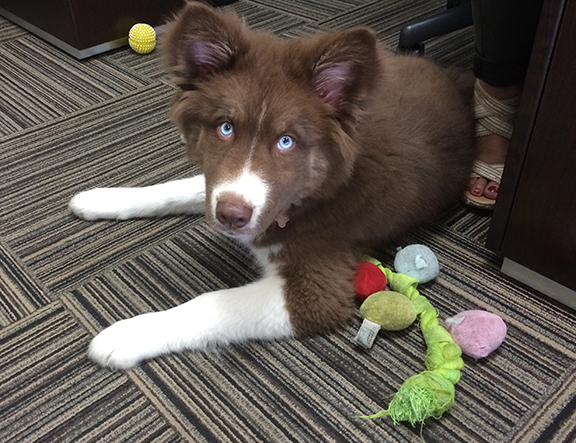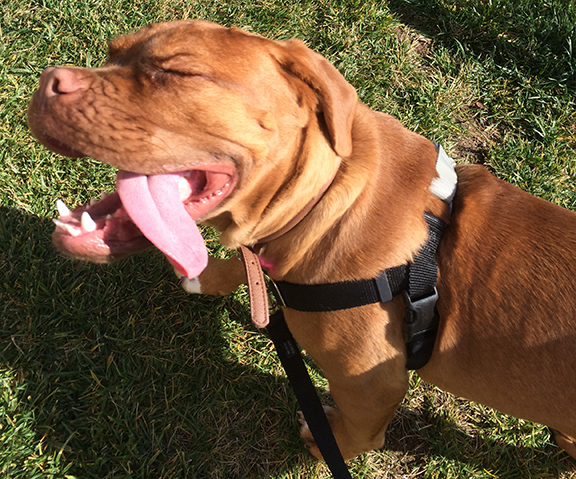
What is a mouthy dog?
“Mouthy” in dogs generally means “puts teeth on skin without drawing blood,” although scratches and minor wounds may occur when the dog is really excited. Mouthiness is corrected by the mother when the puppy is very young, but can be relearned by humans using their hands as toys. Bouncing your hand around on the floor so your puppy “attacks” it is quite cute at 8 weeks of age, but becomes a scary problem when your adolescent or adult dog is suddenly 50 pounds and jumping to play with your hand. Doing too much with teeth can make giving treats during training difficult. If your dog nips to the point you can’t treat to train you really need to fix the nipping first.
Solution #1: Hands aren’t toys. Prevention is easier than fixing.
Teach dogs hands are only for pets and treats and toys. Playing tuggy with a dog that doesn’t get overly excited (overly excited means the dog jumps to grab the toy when it is taken away,) can be a great way to engage the mouth if done properly. Teach “take” and “drop” or “give” and always give a treat in exchange for the toy.
Solution #2: Kisses not teeth
If your dog is already putting teeth on you, it’s time to teach an alternate behavior. Dogs can’t kiss and bite at the same time. Put a treat in your hand and close your fist. If the dog licks, open your hand and give the treat. If the dog puts teeth on the hand, withdraw the hand and try again. Do this often.
Solution #3: Be a tree
All play and attention stops when teeth are used. Tuck your hands in (at your bellybutton or under your armpits depending on the height of the dog,) stand straight and look at the ground. Even yelling or “no” can be attention that reinforces the behavior. Wait. When the dog gives up and either sits or starts to walk away, unfold your body and calmly present your hand for a lick. It is important for all household members to do this. There can’t be one person that still plays rough and allows biting. This is a universal rule, biting means play stops. Period.
Solution #4: Find a trainer to help.
A private lesson or two (no group classes since the distractions will be too high,) with a trainer to teach you how to redirect your dog to appropriate play and get you started on foundation behavior training is a good investment. Once you get the principles of training you can make your own plan, but in the beginning you should get a good start with some professional help.
We bring dogs into our homes expecting a cuddly friend and sometimes this isn’t the case. Whether it’s a rescue dog that has problems or a puppy that learned bad habits, the added stress of a problem dog can hurt the harmony of a household. It’s better to fix the problem as soon as it arises since it can become a learned habit that will take longer to fix.




